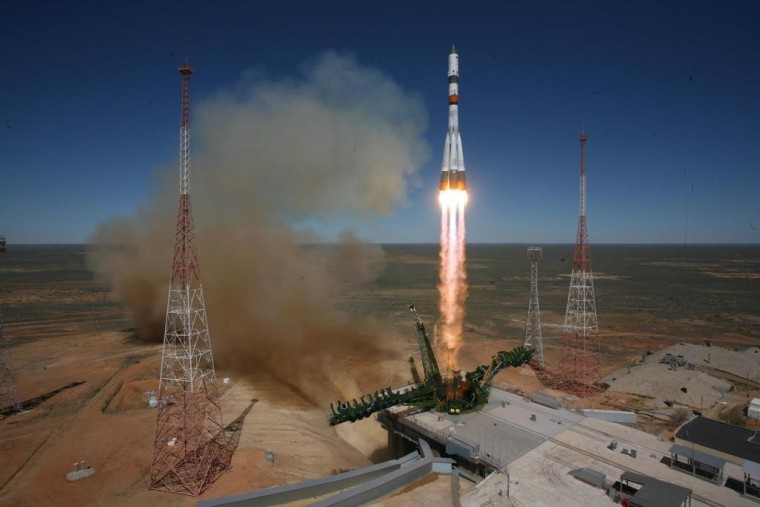Round and round it goes, but exactly where a failed Russian space cargo ship will fall to Earth on this week is a guessing game.
On April 28, Russia's uncrewed Progress 59 supply ship streaked into orbit atop a Soyuz launcher, intended to dock with the International Space Station. But shortly after liftoff, the vessel experienced technical difficulties. Subsequently, a Russian mission control team could not command the cargo vessel packed with nearly 3 tons of supplies.
Roscosmos, the Russian federal space agency, said Wednesday the spacecraft is expected to fall to Earth sometime Friday. That was in line with an assortment of other orbital predictions. [See photos of the Progress 59 cargo ship]

There is some speculation that an explosion may have occurred as the Progress 59 separated from its Soyuz booster's third stage, sending the supply ship into a tail spin. Whatever the cause, the $51 million mission has been abandoned by Russia, leaving the falling Progress vehicle to a fiery demise in Earth's atmosphere.
The U.S. Joint Functional Component Command for Space's Joint Space Operations Center (JSpOC) at Vandenberg Air Force Base in California is regularly monitoring the position of Progress 59.
In a statement last week, the JSpOC officials said they immediately began tracking the event and initiated the appropriate reporting procedures. They confirmed that the resupply vehicle is rotating at a rate of 360 degrees every five seconds. Additionally, the JSpOC has observed 44 pieces of debris in the vicinity of the resupply vehicle and its upper-stage rocket body.
Officials said the JSpOC will continuously track the cargo craft and debris, "performing conjunction analysis and warning of any potential collisions in order to ensure spaceflight safety for all."
As a partner agency in the International Space Station program, the European Space Agency is in close contact with the Russian and U.S. authorities regarding the Progress situation. [How Russia's Progress Cargo Ships Work (Infographic)]
At the moment there are large uncertainties when and where Progress 59 will fall to Earth, said Holger Krag, head of ESA's Space Debris Office at the European Space Operations Center in Darmstadt, Germany. "It depends on the solar activity," Krag told Space.com, "and the impact on the density of Earth's atmosphere, which is very poorly understood today."
Krag said things will become clearer a few hours before the actual re-entry of Progress.
In uncontrolled re-entry mode, Progress in principle could fall to Earth over any point of land or sea between approximately 51 degrees north and 51 degrees south latitudes. There is the potential for pieces of Progress 59 to survive the fiery plunge through Earth's atmosphere and reach the surface, Krag said.
"With every re-entry of a large structure from space you can expect a small fraction to survive," Krag said. But there is an extremely small probability, he said, that somebody would be injured from the fall. [6 Biggest Spacecraft to Fall Uncontrolled from Space]
"That's because the number of objects that survive is small … and the area over which they are distributed is so huge and mostly unpopulated," Krag said. Also, the large fuel load onboard Progress should burn up before it reaches Earth, he said.
NBC News contributed to this condensed version of a report from Space.com. Read the original Space.com report. Follow Space.com on Twitter, Facebook and Google+.